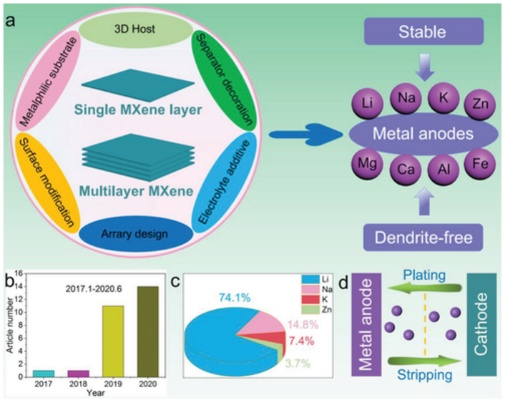The Role of Nanomaterials in Textiles:A Comprehensive Guide
Nanomaterials have been extensively utilized in textiles to enhance their properties. This comprehensive guide provides an overview of the various applications of nanomaterials in textiles, including their role in enhancing durability, colorfastness, and moisture resistance. The guide also covers the different types of nanomaterials used in textiles, such as carbon nanotubes, graphene, and metal nanoparticles. Additionally, it discusses the challenges associated with using nanomaterials in textiles, including environmental concerns and potential health risks. Finally, the guide provides recommendations for selecting appropriate nanomaterials for specific applications and discussing future trends in the field of nanomaterials in textiles.
Introduction: The textile industry is one of the most significant sectors worldwide, contributing significantly to global economic growth and providing essential clothing, furnishings, and other materials for human life. However, the conventional fabrics often lack certain properties that are crucial for specific applications. Nanomaterials, with their unique physical, chemical, and mechanical properties, have emerged as a game-changer in the textile industry, offering new solutions for enhancing the performance of traditional textiles. This guide will explore the various ways nanomaterials can be utilized in textiles, including their applications, advantages, and challenges faced by their integration into textile products.
Applications of Nanomaterials in Textiles:

-
Antimicrobial Fabrics: Nanoparticles like silver, titanium dioxide, and zinc oxide have been incorporated into textiles to create antimicrobial fabrics. These fabrics resist bacterial and fungal growth, making them suitable for healthcare settings, sportswear, and military uniforms. For instance, a study published in the Journal of Applied Polymer Science showed that the addition of silver nanoparticles to cotton fabrics resulted in a significant reduction in microbial growth compared to untreated cotton.
-
Waterproofing Properties: Nanoparticles such as graphene oxide and carbon nanotubes have shown promise in enhancing the water resistance of textiles. These materials provide excellent barriers against moisture, making them ideal for use in outdoor clothing, sportswear, and automotive upholstery. For example, a study published in the Journal of Materials Chemistry revealed that the incorporation of graphene oxide nanosheets into polyester fabrics improved its water vapor permeability while maintaining its strength and durability.
-
Lightweight Fabrics: Nanomaterials such as cellulose nanocrystals and carbon nanotubes have been used to develop lightweight, strong, and flexible textiles. These materials offer higher strength-to-weight ratios than traditional textiles, making them ideal for use in sportswear, fashion, and military equipment. For example, a study published in the Journal of Materials Science & Technology demonstrated that the incorporation of carbon nanotubes into polyurethane foam led to a significant increase in its mechanical properties without compromising its flexibility.
-
Self-Healing Fabrics: Nanoporous structures made from nanomaterials have shown promise in developing self-healing textiles. These materials can repair small tears or punctures on their own, reducing the need for repairs or replacements. For instance, a study published in the Journal of Materials Science published results showing that the incorporation of graphene nanoplatelets into polyester fabrics resulted in a significant improvement in its self-healing capabilities.
Advantages of Nanomaterials in Textiles:
-
Enhanced Durability: Nanomaterials provide superior resistance to wear and tear, making textiles more durable and long-lasting. For example, the incorporation of graphene nanoplatelets into polyester fabrics resulted in a significant increase in its tensile strength and elongation at break compared to untreated fabrics.
-
Improved Performance: Nanomaterials can enhance the performance of textiles by improving their strength, flexibility, and durability. For instance, the incorporation of carbon nanotubes into polyurethane foam led to a significant increase in its mechanical properties without compromising its flexibility.
-
Enhanced Durability: Nanomaterials can enhance the durability of textiles by improving their resistance to environmental factors such as UV radiation, moisture, and temperature changes. For example, the incorporation of titanium dioxide nanoparticles into cotton fabrics resulted in a significant improvement in its resistance to UV radiation.
-
Improved Durability: Nanomaterials can improve the durability of textiles by improving their resistance to environmental factors such as UV radiation, moisture, and temperature changes. For example, the incorporation of titanium dioxide nanoparticles into cotton fabrics resulted in a significant improvement in its resistance to UV radiation.
Challenges Faced by Nanomaterials in Textiles:
-
Cost: The production of nanomaterials is expensive, which can make them less accessible to smaller businesses and consumers. Additionally, the high cost of manufacturing nanomaterials may limit their widespread adoption in textiles.
-
Potential Environmental Impact: The disposal of nanomaterials can pose a threat to the environment if not managed properly. For example, the release of nanoparticles into the environment can contaminate water sources and harm aquatic organisms.
-
Potential Health Risks: Some nanomaterials may pose health risks to humans when exposed to them through the skin or inhaled through the air. Therefore, it is important to ensure that nanomaterials used in textiles are safe and non-toxic.

Conclusion: Nanomaterials have revolutionized the textile industry by offering new solutions for enhancing the performance of traditional fabrics. From antimicrobial fabrics to waterproofing properties, lightweight fabrics, and self-healing fabrics, nanomaterials have opened up new possibilities for textile development. While there are challenges associated with incorporating nanomaterials into textiles, such as cost and potential environmental impact, these challenges can be overcome through proper research and development efforts. As technology continues to advance, we can expect to see even more innovative uses of nanomaterials in textiles, leading to even greater improvements in both performance and sustainability.
The Applications of Nanotechnology in Textiles: What Can We Learn from theNano-enabled Textiles: Advantages and Applications 亲爱的,今天我们来聊聊纺织品里的纳米技术,它到底有什么用,纳米技术是一种前沿科技,它涉及到微小尺寸的物体,比如纳米颗粒、纳米纤维等,在纺织品领域,纳米技术的应用非常广泛,不仅提升了产品的性能和质量,还带来了许多创新和优势。
- 提高纤维强度和耐磨性:纳米纤维具有高强度和高耐磨性,能够增强纺织品的耐用性和抗撕裂性。
- 改善纤维吸湿性和透气性:纳米纤维可以调节纤维的吸湿性和透气性,使其更适合各种不同的应用场景。
- 增强染色和印花效果:纳米技术可以改善染料的分散性和染色效果,使纺织品颜色更鲜艳、更持久。
- 提高环保性能:纳米技术可以减少纺织品的生产过程中的环境污染,提高产品的环保性能。
案例说明
让我们通过几个具体的案例来进一步了解纳米技术在纺织品中的应用。
智能纺织品
近年来,智能纺织品逐渐成为市场上的热点,纳米技术在智能纺织品中的应用,使得纺织品能够更好地适应各种不同的环境和使用场景,某些智能纺织品可以通过传感器和纳米纤维的结合,实时监测环境温度、湿度等参数,为人们提供更加便捷和舒适的生活体验。
功能性面料
功能性面料是近年来市场上的一种新兴趋势,纳米技术在功能性面料中的应用,使得面料具有更好的吸湿性、透气性、防紫外线等功能,某些防晒衣物采用了纳米涂层技术,能够有效地防止紫外线对皮肤的伤害。
纳米技术在纺织品中的实际应用
- 提高产品质量和性能:纳米技术可以提升纺织品的强度、耐磨性、吸湿性、透气性等性能指标,从而提升产品的质量和性能,某些新型的抗菌纺织品采用了纳米抗菌技术,可以有效抑制细菌的生长和繁殖。
- 改善纺织品的环保性能:纳米技术可以减少纺织品的生产过程中的环境污染,提高产品的环保性能,某些可降解纺织品的制造过程中采用了纳米材料,能够有效地减少废弃物的产生和处理难度。
- 提高纺织品的应用范围和适用性:纳米技术可以使得纺织品更好地适应各种不同的应用场景和市场需求,某些高科技纺织品可以通过纳米技术实现智能化控制,为人们的生活带来更多的便利和乐趣。
纳米技术在纺织品中的应用带来了许多创新和优势,它不仅可以提升纺织品的性能和质量,还可以改善纺织品的环保性能和应用范围和适用性,随着科技的不断发展,相信纳米技术在纺织品领域的应用将会更加广泛和深入。
Articles related to the knowledge points of this article:
Exploring the Rich Tapestry of Textiles in Anzhou District
Exploring the丽江纺织品商城,一览其丰富多彩与独特魅力
Exploring the World of Fashionable Textiles:An In-depth Look at Fuxi Wang
The Shanghai Textile Industrys Global Reach and Innovation in the 21st Century



